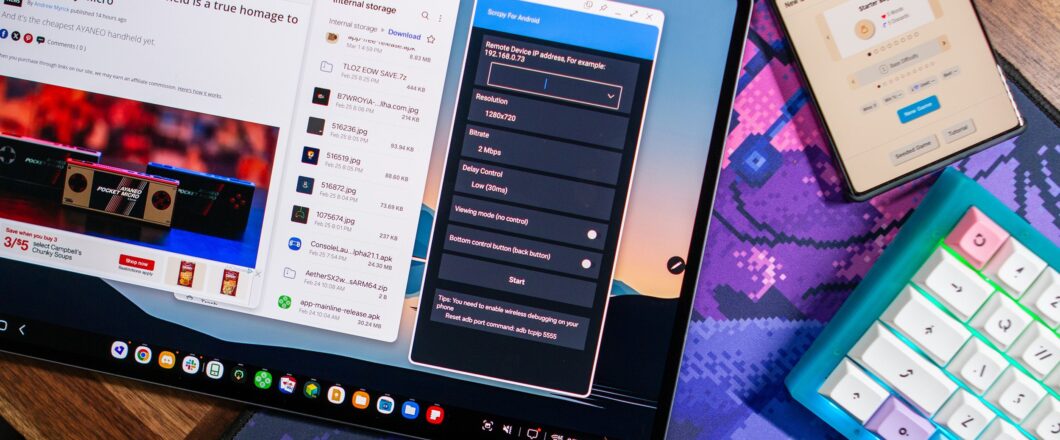
If you’re like me, then you understand the value that having a tablet can provide. However, even with hundreds of tablets on sale for Black Friday and Cyber Monday, finding a good one is becoming increasingly difficult.
That said, when you’ve used as many tablets as I have, you tend to remember which ones stand out, and these are the three deals that I’d recommend to anyone.
When trying to find deals to include, it wasn’t long before I realized that all three of these tablets were once considered amongst the best of 2024. And there’s a pretty good chance that if successors weren’t released, each one of these would still be on that list.
At the same time, if it weren’t for these being supplanted, then you probably wouldn’t be able to save $400 on the Galaxy Tab S10 Ultra, $200 on the OnePlus Pad 2, or $150 on last year’s Kindle Scribe.
There are even more tablets that I’d like to include, but honestly, the list is longer than I initially realized.
Now is an excellent time to dive into the world of tablets, especially if you want a flagship experience. The money saved by these deals has the added benefit of giving you some wiggle room to pair each with some accessories.
While it’s not as big of a deal if you pick up the Kindle Scribe, it’s a bit more important with the other two. Obviously, it all depends on how you plan to use each tablet, so at the very least, I’d recommend snagging a case to protect the screen.
But at the same time, both Samsung and OnePlus offer keyboard covers that double as regular cases when they aren’t being used.
Black Friday 2025 – quick links

Source link Read More

After the download completes, four options appear: Play Now, and under the three-dot menu, PC Game Settings, Add to Home Screen, and Uninstall Game. The menu works with both touch and a controller; I first tested it with the Ayn Odin. Inside PC Game Settings, under Compatibility and Translation Params, there are multiple default profiles for each game, such as Extreme. If a game doesn’t launch immediately, switching this to “Stable” or “Compatible” can sometimes help.
When tapping “Play Now”, you must enable Bluetooth and allow location access, otherwise the required firmware and driver download won’t start. A nice touch: while the drivers are downloading, the game’s trailer plays in the background. After the game launches, the controller detected by GameHub appears in the top-right corner. Unfortunately, GameHub then hangs during startup. Switching to “Steam Light Weight Mode” didn’t help, and neither did changing from proton10.0-arm64x2 to proton9.0-arm64x3. The same issue occurred with Amnesia: The Dark Descent, The Stanley Parable, Outlast, and Raft. No game would launch, despite the different parameters I tested.
So I switched hardware and tried a tablet with the Snapdragon 7+ Gen 3, 8 GB RAM, plus 8 GB of virtual RAM. Most titles still refused to run, but I noticed that a few games in my Steam library had a green check mark, as if GameHub was hinting “try these instead.” Alongside Crysis 2, the 2013 Tomb Raider reboot had this green check. I installed it and gave it a shot. I made it to the setup menu, but it wouldn’t go further, even after changing various parameters.
Fine, one last chance. Two more titles were marked with green checks: The Elder Scrolls V: Skyrim (too large to download just for testing) and Outlast. I installed Outlast. And yes: it finally worked. The game runs acceptably at 1280×720 and around 30 FPS, with only a few graphical glitches. So there are some bright spots after all.

Source link Read More

OnePlus has flipped the script on its usual release schedule, releasing the flagship OnePlus 15 this month merely nine months after the OnePlus 13. That was in part to make sure the new phone was the first on the UK market to feature the top-of-the-line Snapdragon 8 Elite Gen 5 chipset from Qualcomm.
Not content with beating its rival Samsung to the punch with that accolade, it now appears OnePlus is set for another Android first with the announcement of the OnePlus 15R, a presumably cheaper version of the £899 OnePlus 15 that will be the first to use another new Qualcomm processor, the Snapdragon 8 Gen 5.
OnePlus teased the release of the OnePlus 15R, which will be fully unveiled on December 17, saying in a press release the phone will be the firm’s “ultimate value flagship device”. A picture on its official website (above) appears to reveal the phone has dual rear cameras, rather than the three on the OnePlus 15.
“OnePlus 15R is the latest member of the OnePlus R series, flagship devices with a legendary laser-like focus on performance and high end gaming,” OnePlus said. “This ethos begins with the chipset and OnePlus 15R will be the first device to launch with the Qualcomm Snapdragon 8 Gen 5 mobile platform, the newest iteration of the Snapdragon 8 Series which also powered OnePlus 11R, OnePlus 12R and OnePlus 13R.”
This new chip is a small step down in power from its ‘Elite’ sibling but will still pack a punch, claiming a 36 percent increase in CPU performance over the previous generation, plus an 11 percent boost in GPU performance and 46 percent improvement in AI performance.
“Our commitment to delivering fast and smooth performance is taken to the next level with the OnePlus 15R, which is part of OnePlus 15 flagship series and a 2-generation upgrade in power, intelligence and design,” said Celina Shi, Chief Marketing Officer of OnePlus Europe.
The “2-generation upgrade” refers to the fact the OnePlus 13R used the Snapdragon 8 Gen 3, which was replaced by the Snapdragon 8 Elite, and then the 8 Elite Gen 5.
Qualcomm’s confusing naming aside, the release of an 8 Gen 5 marks a return to the naming convention we last saw with the 8 Gen 3 – skip ahead two generations and you get Gen 5, a chip that is now outgunned by the 8 Elite Gen 5.
Nice and simple, right?
“As such, we’re thrilled the OnePlus 15R includes the Snapdragon 8 Gen 5, one of most powerful chipsets on the market and we’re excited to see how our users take to the OnePlus 15R when it launches later this year,” Shi said.
While the Snapdragon 8 Elite Gen 5 is likely to feature on upcoming phones such as the Samsung Galaxy S26 Ultra as the most performant Android chipset from Qualcomm this generation, the Snapdragon 8 Gen 5 will be no slouch, with two prime cores and six performance cores, just with a slightly lower clock speed.
OnePlus has kept all other spec information under wraps, along with the price, so we will have to wait until December 17 to find out full details. The OnePlus 15 starts at £899 and the OnePlus 13R from earlier this year cost £679, so hopefully the 15R is priced below £700 for those Android buyers who value top performance but don’t want to splurge close to £1,000 on a smartphone.

Source link Read More




